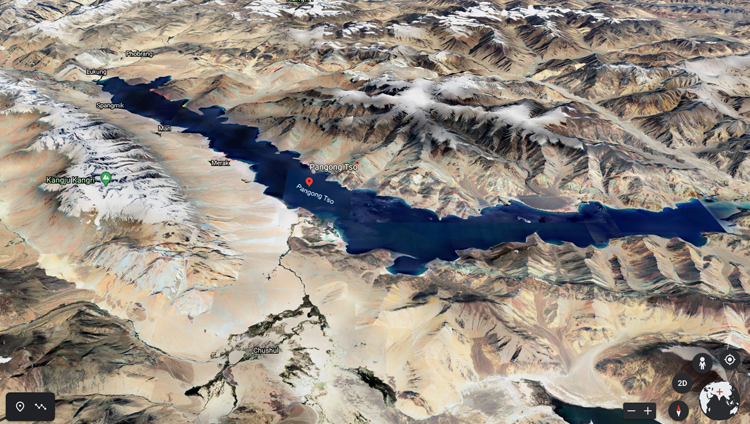INDIAN ARMED FORCES CHIEFS ON OUR RELENTLESS AND FOCUSED PUBLISHING EFFORTS

The insightful articles, inspiring narrations and analytical perspectives presented by the Editorial Team, establish an alluring connect with the reader. My compliments and best wishes to SP Guide Publications.

"Over the past 60 years, the growth of SP Guide Publications has mirrored the rising stature of Indian Navy. Its well-researched and informative magazines on Defence and Aerospace sector have served to shape an educated opinion of our military personnel, policy makers and the public alike. I wish SP's Publication team continued success, fair winds and following seas in all future endeavour!"

Since, its inception in 1964, SP Guide Publications has consistently demonstrated commitment to high-quality journalism in the aerospace and defence sectors, earning a well-deserved reputation as Asia's largest media house in this domain. I wish SP Guide Publications continued success in its pursuit of excellence.
- Operation Sindoor: Resolute yet Restrained
- India’s Operation Sindoor Sends a Clear Message to Terror and the World – ‘ZERO TOLERANCE’
- Japan and India set forth a defence cooperation consultancy framework, talks on tank and jet engines
- Terrorist Attack in Pahalgam in Kashmir: Unfolding a long surgical war against PAK
- Lt General Pratik Sharma takes over Command of Indian Army's Northern Command
China’s Second Bridge on Pangong Tso
The fact that China is constructing the second bridge simultaneously from both the north and south banks of Pangong Tso indicates the urgency that is being accorded to it by the PLA
 |
The Author is Former Director General of Information Systems and A Special Forces Veteran, Indian Army |

With the India-China standoff in Eastern Ladakh continuing, China has been upgrading its defences and infrastructure in the areas under its illegal occupation. These activities are all along the Line of Actual Control (LAC). On May 16, 2022, the Eastern Army Commander, Lieutenant General Rana Pratap Kalita, said that the People’s Liberation Army (PLA) has set up a 5G telecom unit, among other facilities, on the eastern frontier, as it goes about constantly augmenting infrastructure along the ‘notional’ LAC. He said, “Basically, all activities the Chinese PLA is undertaking to develop infrastructure is to ensure they are in a better position to respond to any emerging situation and mobilising forces in short time.”
Kalita said that India’s primary concern was Chinese border villages coming up close to the LAC, potentially providing sanctuary for civilians as well as troops as and when mobilisation takes place. Besides, the PLA has set up logistics nodes to support troops operating in forward areas for longer periods.
All activities the Chinese PLA is undertaking to develop infrastructure is to ensure they are in a better position to respond to any emerging situation and mobilising forces in short time
In Eastern Ladakh, China is building a second bridge over the Pangong Tso. The Ministry of External Affairs (MEA) confirmed this on May 20. MEA spokesperson Arindam Bagchi told reporters:
- “We have seen reports of a bridge being constructed by China on Pangong Tso alongside its earlier bridge. Both these bridges are in areas that have continued to be under the illegal occupation of China since the 1960s. We have never accepted such illegal occupation of our territory, nor have we accepted the unjustified Chinese claim or such construction activities. We have made it clear on several occasions that the Union Territories of Jammu & Kashmir and Ladakh are an integral part of India and we expect other countries to respect India’s sovereignty and territorial integrity.”
- “In order to ensure that the nation’s security interests are fully protected, Government has stepped up development of border infrastructure especially since 2014, including construction of roads, bridges etc. Government remains committed to the objective of creating infrastructure along the border areas to not only meet India’s strategic and security requirements but also facilitate the economic development of these areas. And of course, Government keeps a constant watch on all developments that have a bearing on India’s security and takes all necessary measures to safeguard its sovereignty and territorial integrity.”
Concurrently, an official from the Ministry of Home Affairs (MHA) told a newspaper, “The latest ground assessment has revealed increased infrastructure activity by China along the LAC in eastern Ladakh, including the construction of a second bridge on the Pangong Lake. We are keeping a close watch.”
Government keeps a constant watch on all developments that have a bearing on India’s security and takes all necessary measures to safeguard its sovereignty and territorial integrity
The first bridge over Pangong Tso, completed by China in April 2022, is reportedly being used by the PLA to station cranes and bring across construction equipment. The second bridge, being constructed is bigger and wider than the first one. It is likely to have a width of 10 metres and will be 450 metres long when completed in July 2022. The fact that China is constructing the second bridge simultaneously from both the north and south banks of Pangong Tso indicates the urgency that is being accorded to it by the PLA.

Both bridges will cut the distance between Chinese troop positions on the north bank of Pangong Tso to a key PLA base at Rutong, on the eastern end of the lake, by around 150 km. Earlier, the PLA built a new road to its Moldo Garrison between September 2020 and mid-2021, during the continuing standoff, in order to obviate observation by Indian troops from the nearby heights.
There should be no doubt that these bridges are being built for offensive purposes and not just for routine faster mobilisation to cater for emergency situations
The bridges are next to Khurnak Fort (West of India’s claim line), where China has major frontier defence bases – China calls it Rutong Country. Khurnak Fort itself has a frontier defence company. The bridgesare at one of the narrowest points on the lake, close to the LAC. Induction of PLA from China’s G219 Highway will be much faster through these bridges. Most importantly, the second bridge will facilitate quick induction of mechanised and motorised formations. The north bank of Pangong Tso already has a metal road up to Finger 4 from the Chinese side.
There should be no doubt that these bridges are being built for offensive purposes and not just for routine faster mobilisation to cater for emergency situations. China does not foresee any emergent situation created by India. Moreover, China cares two hoots for the observations by the MEA and the second part of Baghchi’s comments are anyway meant for public consumption at home since China is fully aware of what border infrastructure we are developing.
Vacating the Kailash Range was a strategic blunder on our part, leaving us with no leverage. After 15 rounds of military-to-military talks, to expect the Chinese to move back to the pre April 2020 positions in Eastern Ladakh is living in a fool’s paradise. India continues to root for more Corps Commander-level talks; akin to the ostrich with its head buried in sand.





